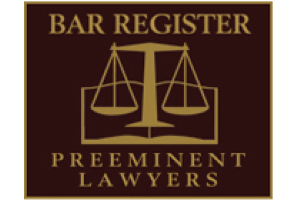10 Common Types of Truck Accidents
In years of representing individuals and families devastated by catastrophic trucking crashes, we have seen recurring patterns of common types of truck accidents. Here are ten of the most common types.
- Rear-End. One of the most common types of auto accident, especially on heavily traveled expressways, rear-end collisions involving trucks multiply damaging potential. Dependent upon the weight of the carry load, rear-end truck accidents can be catastrophic. We have handled trucking rear end collisions ranging from crunching the rear of the lead vehicle and causing serious back injury to totally crushing the entire car under the road tractor and killing all occupants of the car. When expressway traffic slows dramatically in front of me, I hit the hazard flasher button to signal any driver behind me – trucker or otherwise — to wake up and pay attention.
- Head-On. One of the most dangerous forms of truck crashes involve head-on collisions, combining the speed, mass and momentum of an 80,000 pound vehicle and a smaller passenger vehicle. The physics of that combination is such that the smaller vehicle never wins that contest. Truck drivers work on a tight schedule and are under constant economic pressure to meet deadlines. When rushed, fatigued, distracted and under pressure, they can become reckless in pursuit of “making good time”. Head-on collisions are one of the most dangerous types of the truck accidents.
- Jackknife. When a trailer folds in an acute angle (“jackknife”), semi-truck’s trailer swings outward during an accident, causing the cab of the truck to turn to the trailer. This is often the result of quick braking.
- Tire Blowout. Controlling a vehicle after a tire blowout is incredibly difficult, especially in a huge commercial truck in which the potential results is much worse than in a passenger car. As such, tire blowout truck accidents are potentially catastrophic. We had a case in which there was a blowout on a front steering wheel of a large truck, when then crossed the median of an interstate highway and crashed head-on into oncoming traffic.
- Truck Rollovers. Rollovers are the most common types of truck accidents. When truck tires fail to “grip” the road, the vehicle will lose control and slide sideways, this can cause a rollover. The handling characteristics, loading and center of gravity of different types of large trucks and lead to truck rollovers at surprisingly law can also occur when the driver is traveling as slowly as 5 mph, particularly if a load shifts on a tightly curved expressway ramp. We had a case in a load of heavy tile was center loaded, not properly braced, and caused the tractor trailer to roll over in a curving exit ramp.
- Air Brake. There is a good reason why trucking safety rules require inspection of brakes before and every trip and on a regular inspection schedule. Bad air brakes can cause a crash when traveling downhill, a truck’s air brakes fail, disabling the truck from coming to a stop. Due to the stress put on the air brakes by such a heavy vehicle, truck brakes should consistently be monitored. We once had a case in which after a crash, the truck driver jumped out and exclaimed, “I told them ##$^^& to fix those brakes!”
- Under-Ride. Catastrophic head injury or death may occur when a smaller vehicle may go under a truck or trailer from the rear or side if the truck stops suddenly without warning, is improperly parked on the shoulder of the road without required warnings, or pulls out across a roadway in the dark. In the US, trailers now have underride guards though they are often too weak to be effective. In Europe, there are also side underride guards to prevent smaller vehicles from when a truck pulls across a road in the dark.
- T-Bone (Side-Impact). When a huge tractor-trailers strikes a small car in the side, particularly on the driver’s side, the result is often fatal to the driver of the smaller vehicle.
- Lost Load. Among of the very important responsibilities of a truck driver is to properly secure a truck load. Truck drivers are required to check at several set points in a trip. When truck drivers neglect to do so, catastrophic truck accidents may follow.
- Blind Spots. In large trucks, blind spots are significant, making changing lanes difficult for drivers. However, truck drivers are supposed to regularly check their mirrors so as to be aware of smaller vehicles and motorcyclists approaching their blind spots. Newer technologies are available to warn truckers of vehicles in their blind spots. Similarly, motorists should be of truckers’ blind spots in order to avoid a truck accident.
Often, but not always, trucking crashes are caused by the negligence of the trucking company or truck driver. Other times, someone else is at fault. Insofar as possible, everyone sharing the road with large trucks should drive defensively, assuming that the truck driver may be tired, distracted, impaired and will do the wrong thing. It is useful to recall the short poem that my grandmother taught me:
Here lies the body of William Jay
Who died defending his right of way.
He was right, dead right, as he sped along,
But he’s just as dead as if he’d been wrong.












